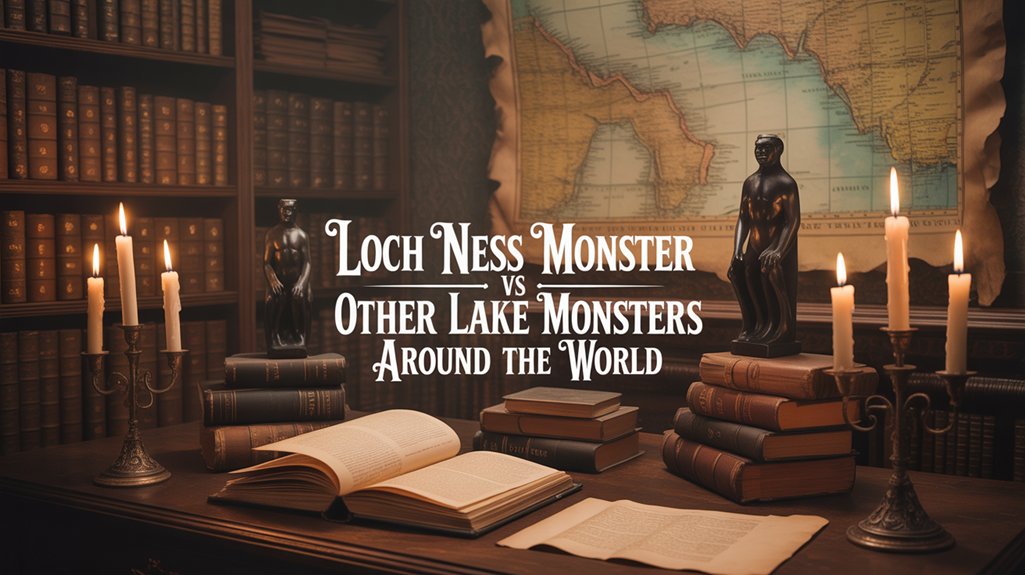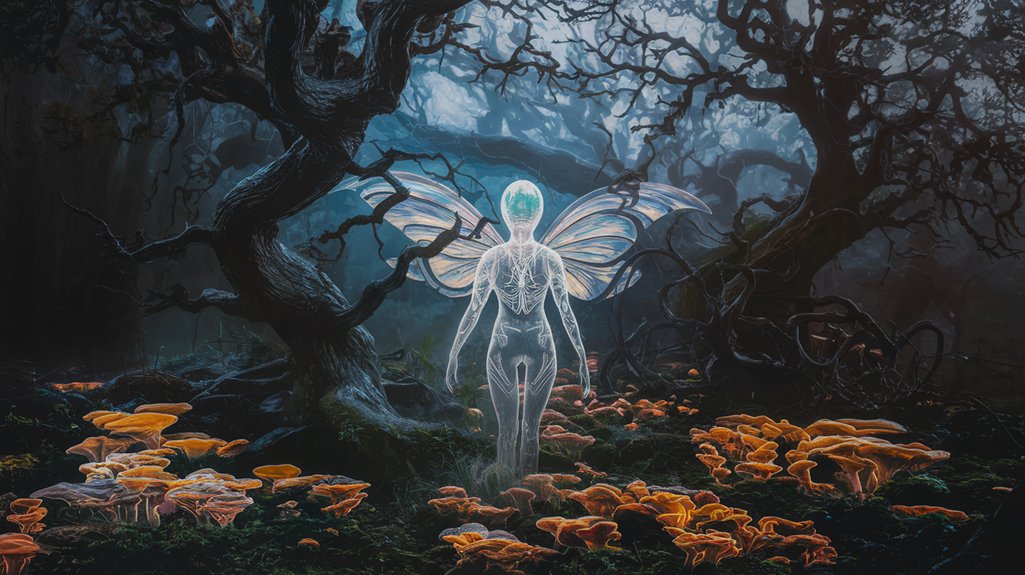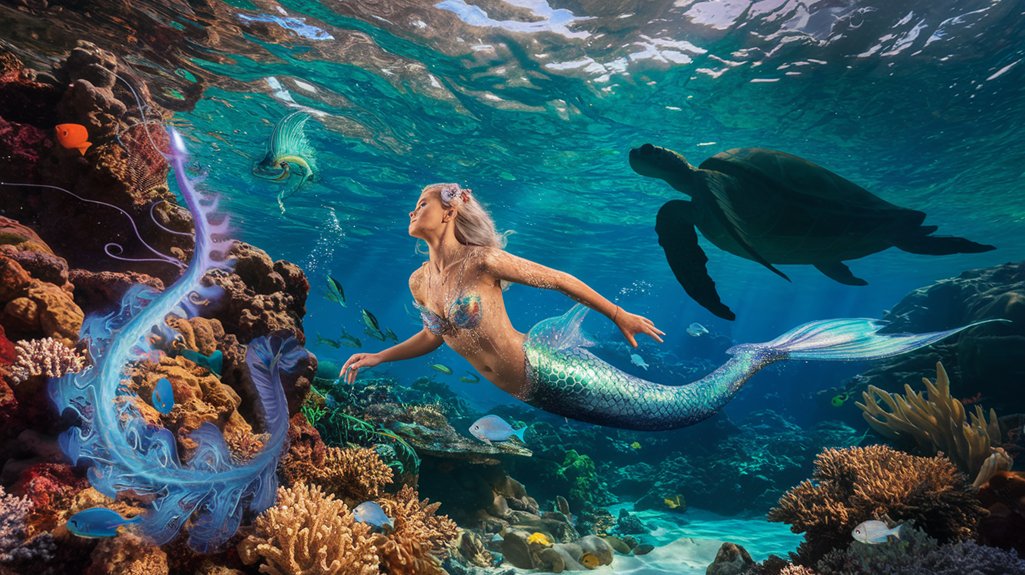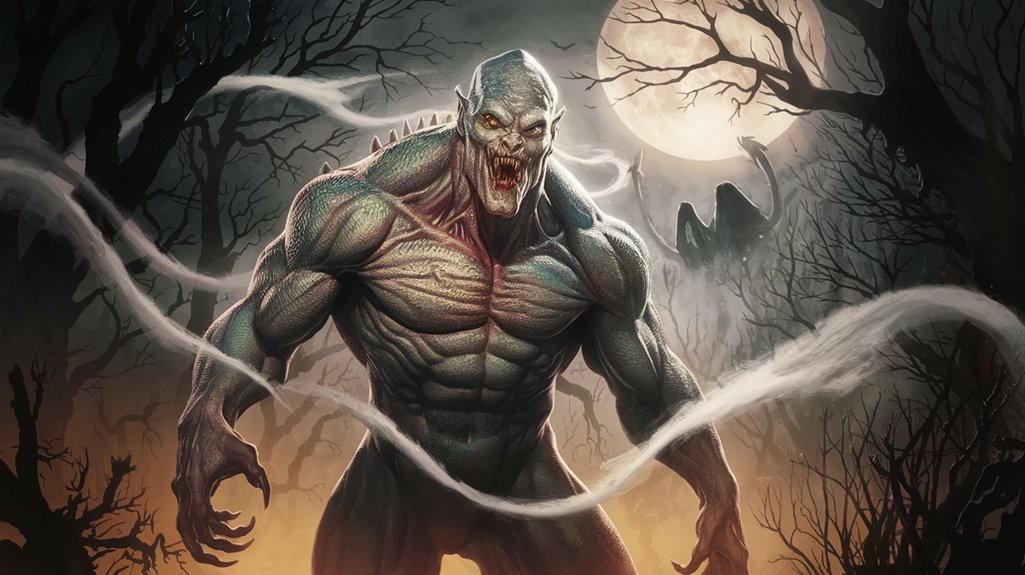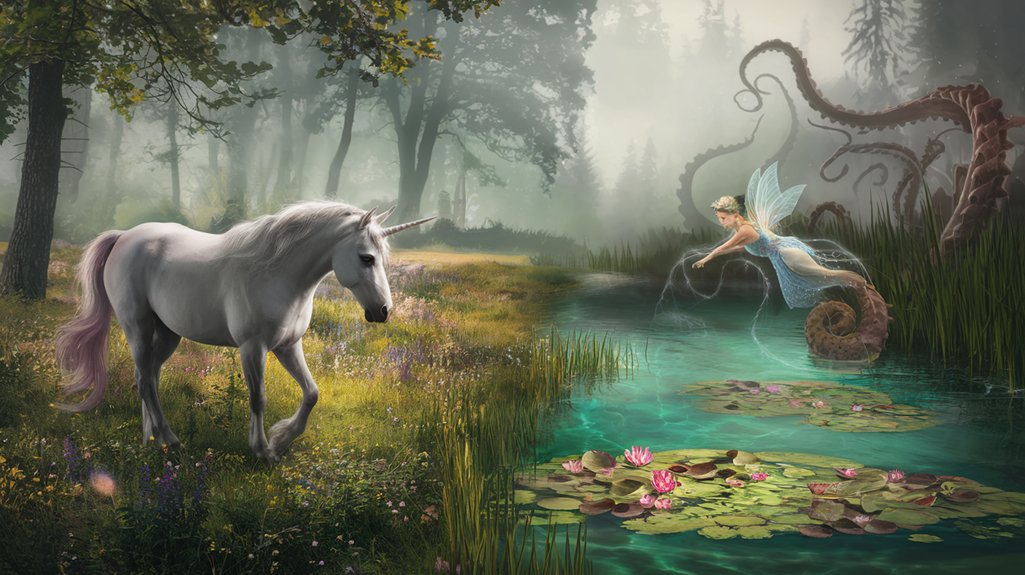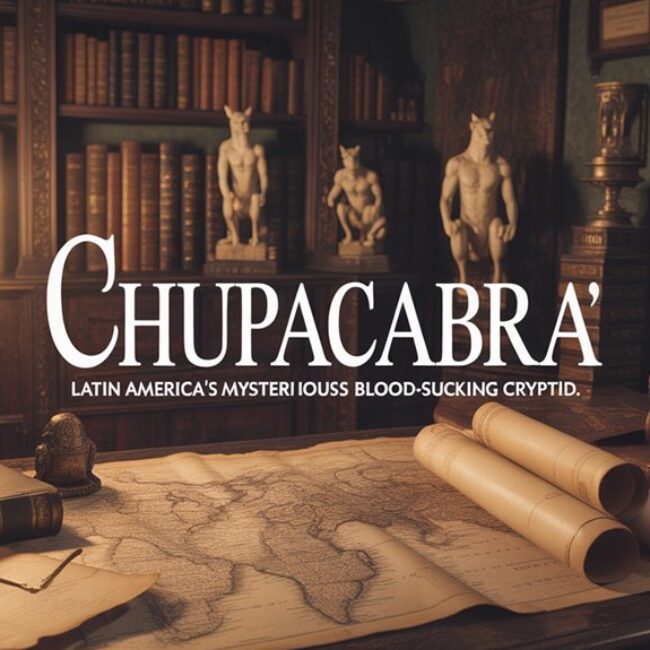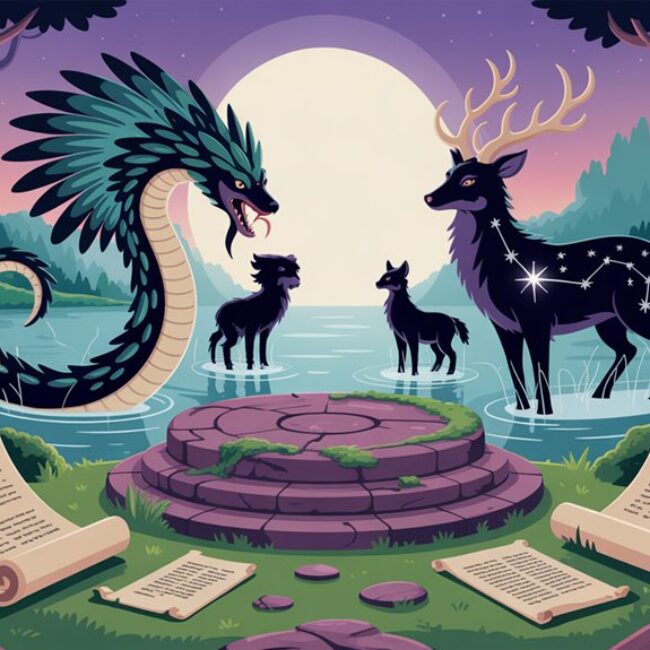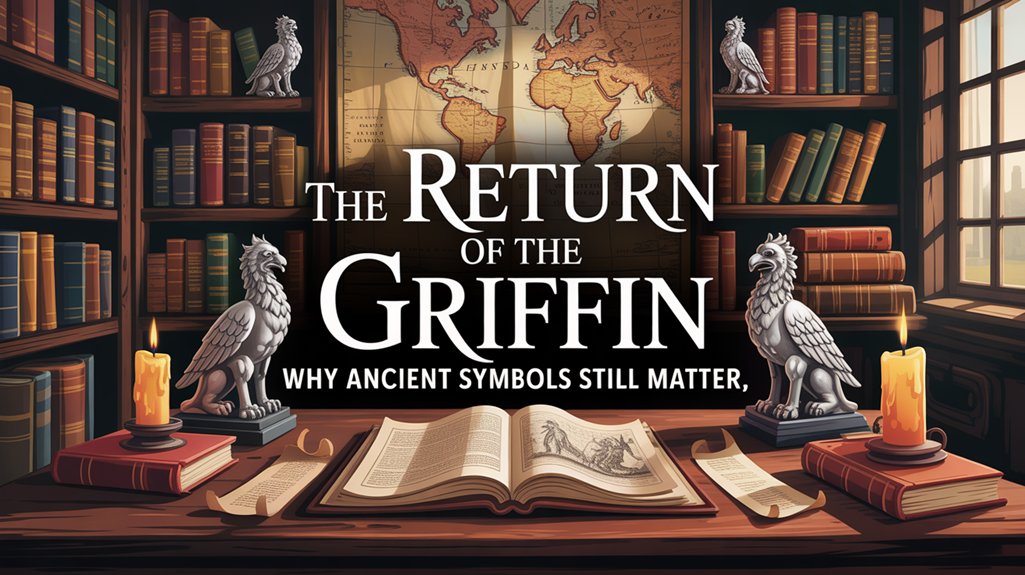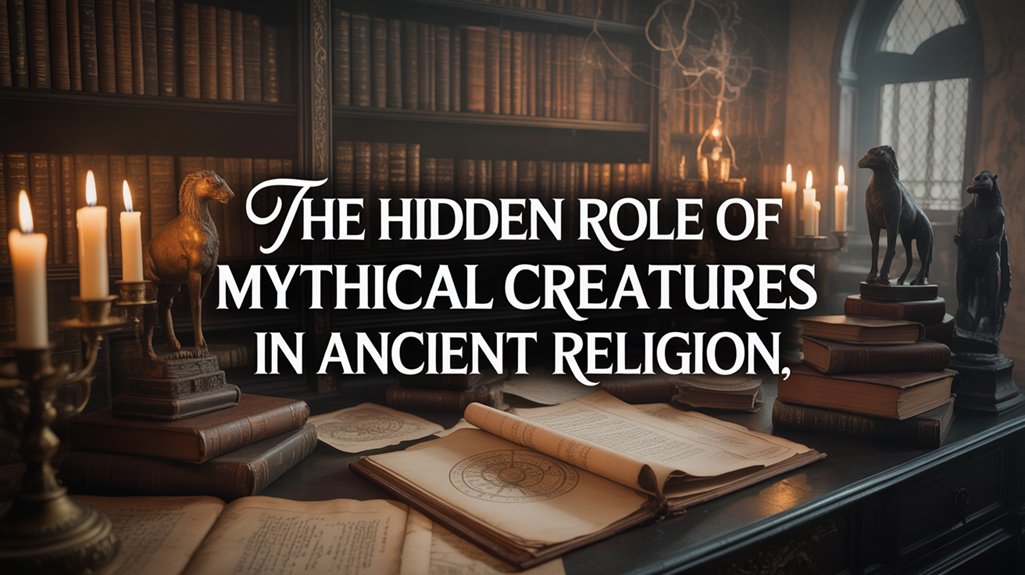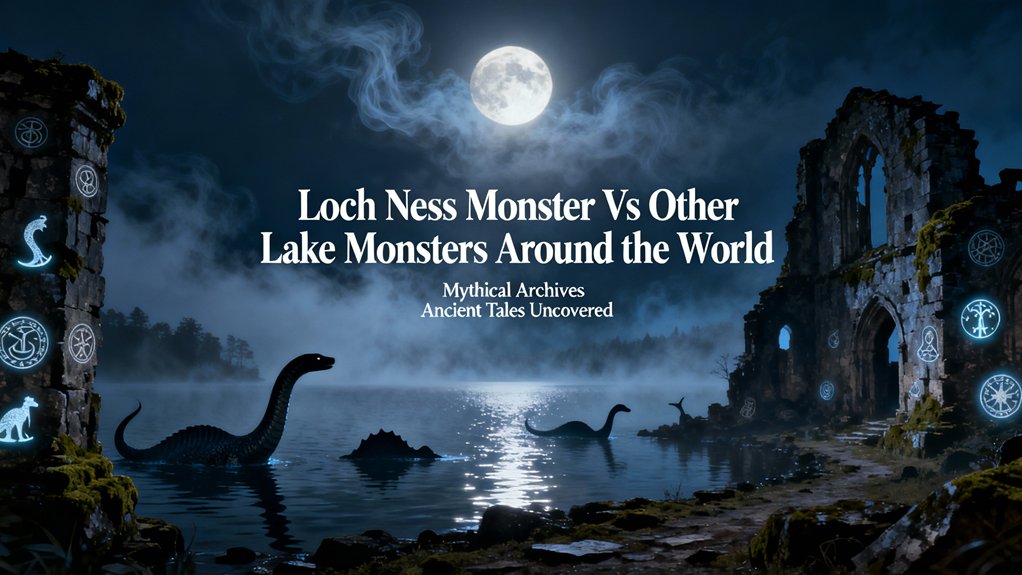
You’ll find Nessie shares remarkable similarities with lake cryptids worldwide—Champ inhabits Lake Champlain’s depths since 1873, while Ogopogo derives from Syilx indigenous N’ha-a-itk traditions, and Japan’s Issie embodies Shinto reverence. These serpentine entities exhibit consistent characteristics: elongated bodies, multiple humps, dark coloration, and swift submersion in waters exceeding 700 feet. Scientific investigations employing sonar technology have detected substantial underwater contacts at Loch Ness and acoustic anomalies in Lake Champlain, yet definitive identification remains elusive. Each creature generates millions in tourism revenue while preserving ancestral connections to ancient waters, their eldritch presence beckoning further exploration of humanity’s enduring fascination with aquatic mysteries.
Table of Contents
ToggleKey Takeaways
- Nessie originated in sixth-century folklore, while Champ dates to the 1800s steamboat era and Ogopogo derives from indigenous Syilx traditions.
- Nessie and Ogopogo share elongated, multi-humped forms in deep cold waters; Issie appears horse-like; Storsjöodjuret features a dog-headed serpentine body.
- Loch Ness generates £41 million annually; Lake Champlain’s Champ contributes $57 million to regional economies through tourism and cultural industries.
- Scientific investigations use sonar and hydrophones, detecting underwater anomalies but yielding no definitive proof across all major lake monster locations.
- Theories include misidentification of waves and fauna, mass psychology, and unknown species, with the plesiosaur hypothesis scientifically rejected.
The Cultural Origins and Historical Sightings of Nessie
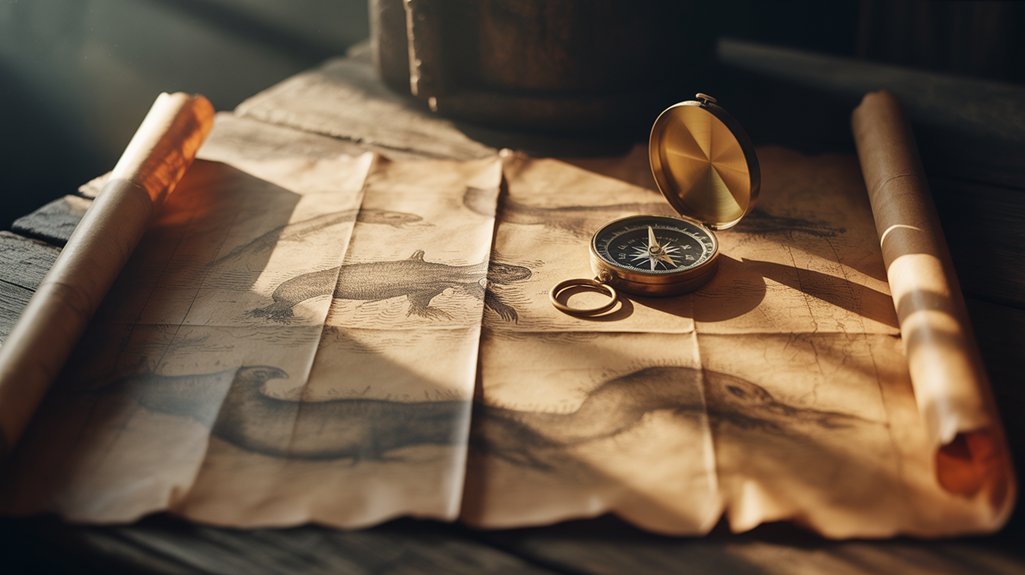
Though the murky depths of Loch Ness have harbored tales of aquatic behemoths since the sixth century CE, when Saint Columba allegedly encountered a “water beast” in the River Ness, the modern mythology of Nessie crystallized only in 1933—a pivotal moment when road construction along the loch’s northern shore stripped away ancient forests and exposed previously obscured sightlines to the water.
You’ll find the cultural significance of this creature extends beyond mere folklore into collective psychological territory, where Scotland’s ancient Pictish kelpie traditions merged with twentieth-century mass media’s appetite for chimeric wonders.
The historical myths preceding Nessie’s fame weren’t isolated Scottish phenomena. Celtic water spirits inhabited these peaty depths long before Christianity arrived.
Saint Adomnán’s seventh-century hagiography documented Columba’s confrontation with something eldritch rising from dark waters. Pre-Christian communities revered such beings as threshold guardians between terrestrial and aquatic domains.
These weren’t monsters to be conquered but forces demanding recognition, respect, ancestral wisdom flowing through Highland consciousness like the loch itself—perpetual, unfathomable, alive.
Champ of Lake Champlain: North America’s Oldest Lake Monster Legend
Lake Monster Myths crystallized through systematic documentation.
The steamboat era brought unprecedented Champ Sightings: 1873 witnessed multiple crew testimonies describing undulating coils breaking the surface.
Sheriff Nathan Mooney’s 1887 account detailed “an enormous serpent, fifty feet at minimum, moving with deliberate purpose.”
Sheriff Nathan Mooney documented a massive serpent exceeding fifty feet, demonstrating calculated movement through Lake Champlain’s waters in 1887.
The 1977 Mansi photograph—though disputed—reignited serious investigation.
This eldritch presence transcends mere folklore; it represents North America’s most persistent cryptozoological phenomenon, documented across four centuries.
Champ endures where others fade.
Ogopogo: British Columbia’s Serpentine Guardian of the Deep
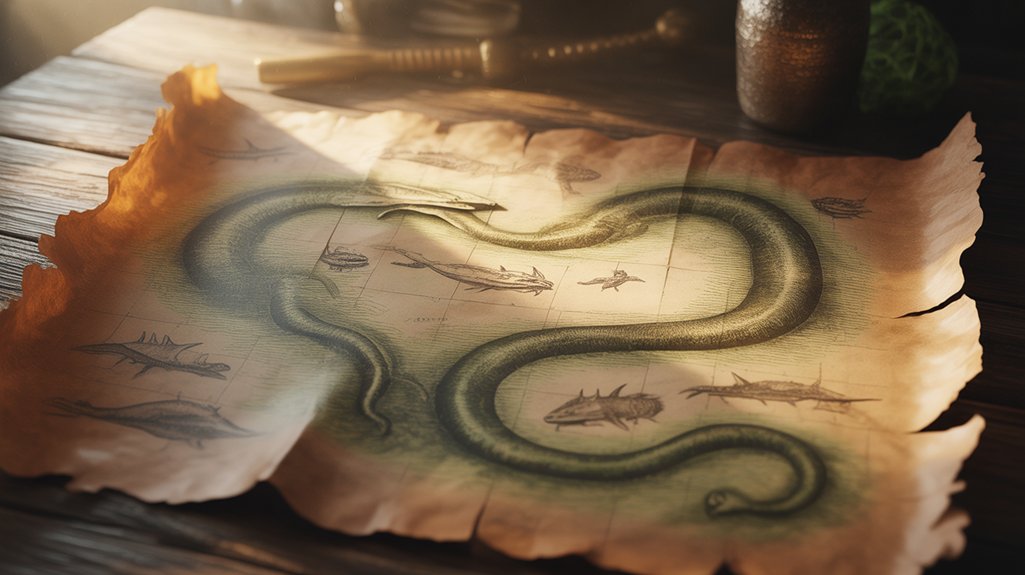
You’ll discover that Ogopogo’s origins stretch back to the Syilx Okanagan peoples, who revered N’ha-a-itk—the spirit dwelling within Okanagan Lake’s lightless depths—as both guardian and harbinger, a serpentine presence demanding tribute for safe passage across sacred waters since time immemorial.
Witnesses throughout the twentieth century have reported encounters with this eldritch creature: a sinuous form measuring fifteen to fifty feet, possessed of multiple undulating humps, a horse-like or reptilian head, scales that shimmer darkly beneath the surface.
While Nessie commands Scotland’s peat-stained loch with solitary mystique, Ogopogo emerges from a living tradition of Indigenous cosmology, altering comparative cryptozoology into an examination of how chimeric entities manifest differently across landscapes, cultures, and the liminal boundaries between myth and memory.
Origins of Ogopogo Legend
Before European cartographers charted the serpentine waters of Okanagan Lake, the Syilx (Okanagan) peoples recognized N’ha-a-itk—the sacred water spirit dwelling within these British Columbia depths since time immemorial.
This eldritch entity demanded respect, tribute, safe passage. Colonial settlers altered reverent indigenous knowledge into commodified ogopogo folklore, stripping away ceremonial gravity for entertainment value.
The transformation accelerated in 1926. That’s when lake monster sightings exploded across newspaper columns, coinciding with tourist industry expansion.
You’ll find the name “Ogopogo” itself represents cultural appropriation—a nonsensical derivation from a British music hall song, imposed upon N’ha-a-itk’s chimeric form.
Yet beneath commercialized veneer, the original tradition persists: thirty-to-fifty-foot serpentine guardian, protector of sacred waters, demanding acknowledgment from those who’d traverse its domain.
Physical Descriptions and Sightings
Since 1872, when Susan Allison documented the first European-recorded encounter, Ogopogo manifestations have followed remarkably consistent patterns—witnesses across 150 years describe an undulating serpentine form, dark greenish-black scales catching sunlight, multiple humps breaking the surface in rhythmic succession. You’ll find these sighting patterns transcend cultural boundaries, revealing chimeric consistency.
| Physical Traits | Documented Characteristics | Frequency in Reports |
|---|---|---|
| Length | 40-50 feet serpentine body | 73% of accounts |
| Coloration | Dark green to obsidian black | 89% of accounts |
| Features | Multiple humps, horse-like head | 65% of accounts |
The creature’s eldritch presence demands your attention. Witnesses report primal recognition—something ancient, untamed. These physical traits persist through generations, suggesting either genuine biological consistency or deeply embedded archetypal memory within British Columbia’s Indigenous and settler populations alike.
Comparing Nessie and Ogopogo
Across 4,000 miles of North American geography, two serpentine legends guard their respective waters with parallel ferocity—Nessie in Scotland’s ancient glacial trench, Ogopogo in British Columbia’s Okanagan Lake.
You’ll find remarkable convergence in their chimeric forms: both manifest as elongated, undulating creatures with multiple humps breaking surface tension. Nessie sightings typically describe grayish-brown coloration, while Ogopogo folklore emphasizes darker, almost black scales. The Syilx peoples called it N’ha-a-itk—”lake demon”—centuries before European contact.
Both cryptids inhabit deep, cold waters exceeding 700 feet. Witnesses report identical behaviors: swift submersion, limited surface exposure, wake patterns suggesting massive displacement.
These eldritch parallels suggest either convergent mythmaking or genuine biological phenomena adapted to similar lacustrine environments. You’re witnessing humanity’s persistent recognition of something vast, primordial, unknowable.
Japan’s Issie and the Folklore of Lake Ikeda
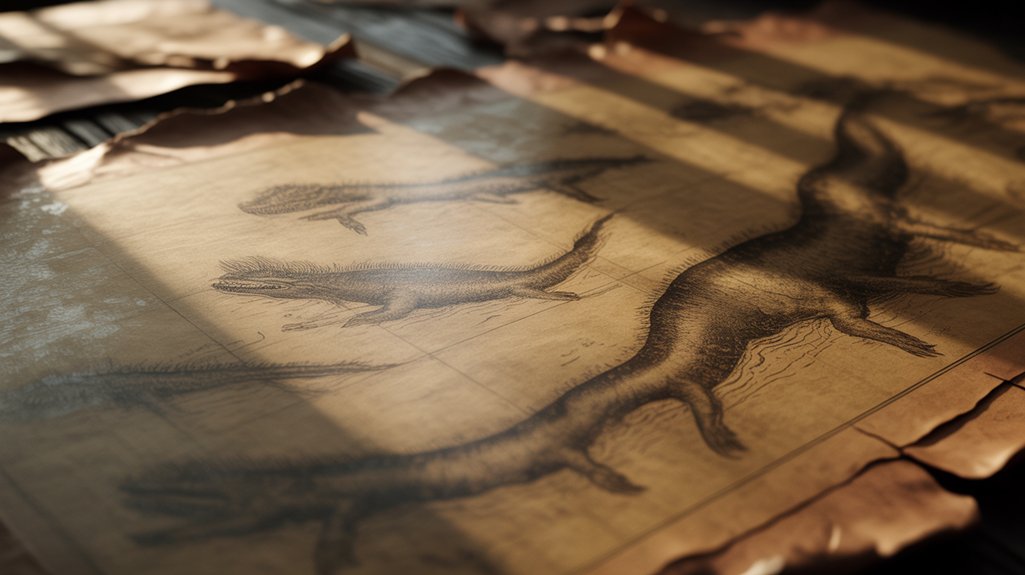
You’ll find Issie lurking beneath the volcanic waters of Lake Ikeda, Kyūshū’s deepest caldera lake, where witnesses since the 1970s have described a chimeric creature spanning five to twenty meters—its obsidian humps breaking the surface like ancient岩 (iwa), stone formations that predate written memory.
The beast embodies Japan’s yūrei traditions, those liminal spirits caught between worlds, yet Issie’s provenance extends deeper still: local Satsuma legends speak of white mare spirits changed by drowning, their equine forms twisted into something eldritch beneath Ikeda’s thermocline.
This reverence distinguishes Issie from Western lake cryptids; she remains 池の主 (*ike no nushi*), the lake’s sovereign protector, her sightings documented through sonar anomalies and the testimony of fishermen who approach her domain with Shintō respect.
Issie’s Physical Description
Witnesses who claim encounters with Issie consistently describe a creature bearing striking serpentine characteristics, measuring between ten to twenty meters in length, with a dark, glistening hide that surfaces from Lake Ikeda’s volcanic depths like something torn from primordial memory. You’ll find Issie’s physical morphology documented through eyewitness testimonies spanning decades, revealing a chimeric entity possessing humped dorsal protrusions and an elongated neck.
| Physical Feature | Description |
|---|---|
| Length | 10-20 meters |
| Coloration | Dark gray to black |
| Body Shape | Serpentine with humps |
| Head Structure | Horse-like or reptilian |
| Dorsal Features | Multiple humps breaking surface |
Understanding Issie’s habitat—the 233-meter-deep caldera lake—proves essential. Issie’s behavior suggests a cryptid dwelling within submerged volcanic caves, emerging sporadically during twilight hours when the veil between worlds grows thin.
Historical Sightings and Evidence
The documented encounters with Issie begin in 1978, when over twenty witnesses simultaneously observed a dark form undulating through Lake Ikeda’s waters—a mass sighting that altered local folklore into contemporary cryptozoological inquiry.
You’ll find that historical accounts preceding this moment stretch back centuries, woven into the island’s mythos. Eyewitness testimonies describe an eldritch presence, chimeric in nature, surfacing during twilight hours when mist clings to volcanic shores.
The 1978 event catalyzed systematic investigation, converting oral tradition into documented phenomena. These sightings resist dismissal; too many observers, too consistent in detail.
The creature inhabits that liminal space between cultural memory and physical reality, demanding you acknowledge what ancient wisdom preserved. Evidence remains tantalizingly incomplete, yet undeniably persistent.
Cultural Significance in Japan
While Western cryptids often occupy spaces of fear and speculation, Issie dwells within Japan’s cultural consciousness as something far more nuanced—a guardian spirit, an omen, a manifestation of the natural world’s untamed essence.
You’ll find this eldritch presence in Lake Ikeda’s volcanic depths, where Japanese Folklore changes monster into deity. The creature emerged prominently in 1978, yet its roots stretch centuries deeper, intertwined with Shinto reverence for water kami and chimeric dragons that protect sacred boundaries.
Unlike Nessie’s tourist-driven fame, Issie represents your connection to ancestral wisdom, where Mythical Creatures aren’t hunted but honored.
The locals don’t seek proof—they maintain shrines. They understand what you’re discovering: some mysteries aren’t meant for capture but contemplation, existing in that liminal space between documentation and devotion.
Storsjöodjuret: Scandinavia’s Ancient Water Beast
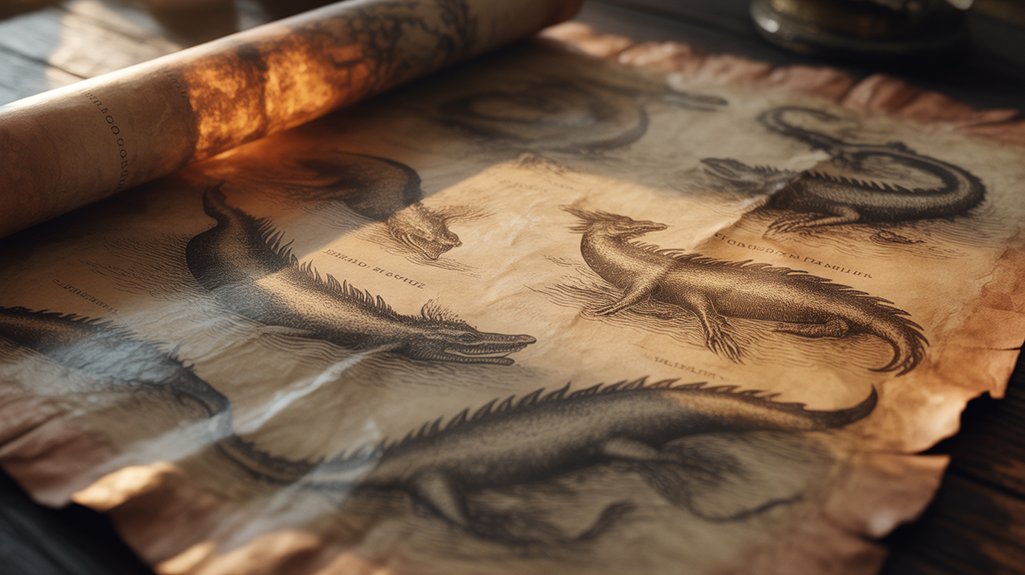
Deep within Sweden’s fifth-largest lake, where glacial waters stretch across 176 square miles of Jämtland province, Storsjöodjuret—literally “the Great Lake Monster”—has commanded both fear and reverence since Viking Age chronicles first documented its presence in 1635.
You’ll find this entity woven throughout Scandinavian folklore, its serpentine form described with disturbing consistency across centuries. Ancient sightings reference a chimeric beast: dog-headed, gray-skinned, stretching fifteen meters through dark waters.
Unlike commercialized cryptids, Storsjöodjuret remains protected—Sweden granted it endangered species status in 1986, though authorities revoked this designation in 2005 after recognizing the administrative absurdity.
The creature embodies something primal, something eldritch that your rational mind struggles to dismiss. Indigenous Sami traditions predate written records by millennia, speaking of water spirits demanding respect.
Not entertainment. Not tourism. This is living mythology, where ancient knowledge persists beyond governmental classifications, where deep waters conceal truths your modern world hasn’t earned the right to fully comprehend.
Physical Descriptions and Behavioral Patterns Across Lake Monsters
Across continents and centuries, eyewitness accounts converge upon morphological characteristics that defy comfortable categorization—serpentine undulations, humped dorsal structures, elongated necks emerging from abyssal depths like periscopes scanning alien terrain.
You’ll discover these physical traits transcend geographical boundaries, suggesting either convergent evolutionary pressures or shared archetypal consciousness.
The behavioral habits manifest in three distinct patterns:
- Crepuscular emergence cycles during dawn and dusk, when witnesses report creatures surfacing briefly before submerging.
- Territorial surveillance behavior, with specimens remaining within specific lake quadrants across decades of sightings.
- Weather-responsive activity, increasing during atmospheric disturbances and electromagnetic fluctuations.
These chimeric entities demonstrate intelligence beyond mere instinct—calculated evasion, deliberate display behaviors, synchronized movements suggesting pod structures.
You’re witnessing something eldritch, something that refuses classification within established zoological frameworks. The creatures exist in liminal spaces, neither fully corporeal nor entirely mythic.
Scientific Investigations and Sonar Evidence From Around the Globe

Though folklore provided the foundation, twentieth-century technology modified cryptid investigation from superstition into systematic inquiry—sonar arrays, underwater cameras, environmental DNA sampling, and hydrophone networks now pierce the darkness where human eyes can’t follow.
You’ll discover that sonar technology reshaped Loch Ness expeditions beginning in 1954, when vessels mapped chimeric shadows beneath peat-stained waters. Operation Deepscan in 1987 deployed twenty-four boats across the loch’s breadth, detecting three substantial underwater contacts defying conventional explanation.
Yet scientific skepticism persists, demanding replicable evidence. Lake Champlain’s investigators documented numerous acoustic anomalies through hydrophone arrays, while Okanagan Lake researchers collected tissue samples from unexplained organisms.
The eldritch depths resist definitive answers—sonar contacts vanish, photographic evidence blurs, DNA analysis reveals only known species.
You stand at this threshold where instrument readings suggest presence without confirmation, where quantifiable data meets the unquantifiable unknown.
Technology illuminates without solving; it reveals absence as much as existence.
Economic Impact: How Lake Monsters Drive Tourism and Local Economies
When monsters become merchandise, entire economies change around their spectral presence—Loch Ness generates approximately £41 million annually for the Scottish Highlands, while Lake Champlain’s Champ contributes an estimated $57 million to the regional economy of New York and Vermont.
You’ll witness how these eldritch entities evolve into economic engines, their chimeric forms granting communities unprecedented prosperity. The tourist attractions built upon cryptid legends demonstrate profound economic benefits:
- Direct revenue streams from museum admissions, boat tours, and specialized expeditions that promise glimpses of aquatic anomalies.
- Secondary markets encompassing accommodations, restaurants, and artisan crafts bearing creature likenesses.
- Media partnerships attracting documentary crews, researchers, and content creators who broadcast these mysteries globally.
These ancient waters, once feared by indigenous populations who whispered warnings across generations, now beckon modern pilgrims seeking wonder.
The transformation from supernatural terror to commercial asset reveals humanity’s remarkable capacity to commodify the unknowable, evolving primordial dread into sustainable livelihood.
Common Theories: Misidentification, Surviving Plesiosaurs, or Mass Psychology
Behind every creature sighting lies a trinity of explanations that scholars have debated since cryptozoology emerged as a quasi-scientific discipline in the 1950s.
You’ll encounter misidentified creatures—sturgeon breaking surface tension, driftwood assuming chimeric forms, otters swimming in serpentine formations. The plesiosaur hypothesis persists, suggesting Jurassic survivors dwelling in thermal vents beneath abyssal depths. Then there’s collective consciousness, psychological phenomena manifesting through cultural transmission.
| Theory | Primary Evidence | Scientific Reception |
|---|---|---|
| Misidentification | Wave patterns, known fauna, debris | Widely accepted |
| Surviving Plesiosaurs | Sonar readings, eyewitness anatomy | Rejected (fossil record) |
| Mass Psychology | Cultural narratives, expectation bias | Academically supported |
| Unknown Species | Unidentified biological specimens | Cautiously considered |
| Seismic Activity | Underwater disturbances, gas releases | Emerging research |
These eldritch possibilities interweave, creating tapestries of mystery. You’re witnessing humanity’s eternal dance between rational inquiry and primordial wonder, each sighting preserving ancestral connections to waters that predate civilization itself.
Frequently Asked Questions
What Should I Do if I Think I’ve Seen a Lake Monster?
If you’ve glimpsed something eldritch beneath darkened waters, you must immediately document your experience following established sighting guidelines: record precise coordinates, time, atmospheric conditions, and the creature’s morphology.
Your monster identification requires sketching distinctive features—humps, appendages, coloration—while memories remain fresh. Don’t dismiss what you’ve witnessed; countless indigenous traditions honor such encounters as genuine.
Submit your account to cryptozoological databases, preserving your observation within humanity’s ongoing chronicle of unexplained phenomena.
You’ve entered liminal territory between known and unknown.
Are There Any Lake Monsters Reported in the Southern Hemisphere?
You’ll discover the Southern Hemisphere harbors its own eldritch aquatic guardians.
Australian Lake Monsters like the Bunyip have haunted Aboriginal waterways for millennia, their chimeric forms emerging from Dreamtime narratives.
South American Legends speak of creatures dwelling in Patagonian depths—cryptids that predate colonial cartography.
These aren’t mere curiosities; they’re living traditions, whispered testimonies from indigenous cultures who’ve witnessed something primal stirring beneath sunlit surfaces.
Ancient knowledge persists where academic certainty dissolves into mystery.
How Much Does It Cost to Join a Lake Monster Expedition?
Like ancient pilgrims seeking eldritch truths, you’ll find expedition costs vary dramatically—from $500 weekend excursions to $5,000 month-long ventures into remote waters.
Membership fees for cryptozoological societies grant you access to specialized equipment, sonar technology, and veteran researchers who’ve dedicated decades to tracking these chimeric entities.
Independent journeys offer freedom without institutional constraints, though they demand greater financial investment.
You’re purchasing not mere tourism, but legitimate fieldwork pursuing creatures dwelling in liminal spaces between myth and material reality.
Can Lake Monsters Survive in Polluted or Man-Made Lakes?
You’ll find that cryptids adapted to pristine, ancient lake ecosystems can’t endure modern pollution effects—their chimeric forms require specific mineral compositions, oxygen levels, and prey populations.
Man-made reservoirs lack the geological antiquity these eldritch beings need. Sacred waters.
Consider how Indigenous traditions describe these creatures dwelling in untouched depths for millennia; introducing industrial contaminants destroys the delicate balance sustaining their mysterious existence.
True lake monsters demand primordial purity, untainted by humanity’s industrial reach.
What Is the Largest Reward Offered for Lake Monster Proof?
You’d relinquish $1 million for glimpsing what hides beneath—that’s the largest reward ever offered for lake monster proof.
In 1987, whisky magnate William Hill posted this staggering bounty for Nessie’s capture, a sum echoing ancient bounties on chimeric beasts.
The eldritch depths guard their secrets jealously, resisting human intrusion, yet this fortune beckons those brave enough to pursue forbidden knowledge.
Such rewards acknowledge what scholars and seekers have long understood: tangible proof demands extraordinary compensation, for truth itself remains untamed, unbound.
Conclusion
You’ve now traversed the liminal threshold between empirical investigation and eldritch mystery, examining these chimeric entities dwelling in aqueous sanctuaries worldwide. Whether you interpret these phenomena through the lens of cryptozoology, psychological projection, or surviving megafauna, lake monsters remain potent symbols—gossamer threads connecting ancient cosmologies to contemporary consciousness. They persist not merely as tourist attractions but as numinous reminders that Earth’s depths still harbor enigmas defying categorical explanation. The waters keep their secrets.

